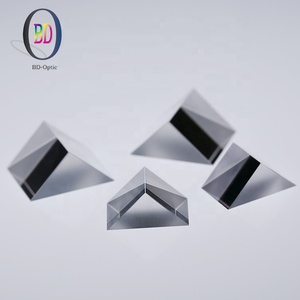

Optical Glass Prisms BoDian Manufacturing High Quality Customizable Equilateral Optical Prism Glass For Multiple Purpose

Wholesale Processing Trapezoidal Prism Optical Quartz Dove Prism





Dove prisms are a unique category of optical prisms, named after their inventor, Heinrich Dove. They are distinct in their ability to invert an image without changing its direction. Primarily used in rotation of images and in beam steering, these prisms are integral in various optical systems. The dove prism's design allows it to be used in a myriad of applications, from precision optical instruments to educational demonstrations.
The dove prism is characterized by its trapezoidal shape, which sets it apart from other prismatic forms. When light enters the prism, it undergoes total internal reflection from the hypotenuse and exits out the same path it entered, albeit image-flipped. This unique property is leveraged in devices requiring image inversion or rotation, such as periscopes and certain telescopic systems. The dove prism rotation effect is particularly useful in fine-tuning the orientation of images in complex optical setups.
While the basic geometry remains consistent, dove prisms can be crafted from various optical materials to suit specific wavelength requirements. Common materials include BK7, fused silica, and N-BK7, each offering different refractive indices and durability. The choice of material affects the prism's performance, especially in high-precision applications where minimal light dispersion is crucial.
The application of dove prism thorlabs extends across scientific research, educational purposes, and advanced photonics. Their ability to rotate images while maintaining the parity of the image makes them invaluable in polarization optics and interferometry. The advantage of using a thorlabs dove prism lies in its high precision and adaptability to various light sources and configurations.
Selecting the right dove prism involves considering parameters such as size, angle tolerance, and coating. The coating is particularly important as it enhances the prism's reflective properties and minimizes losses due to absorption. For applications requiring precise image rotation, the angle tolerance must be tight to ensure the desired effect is achieved.
Integrating a dove prism into an optical system requires understanding its orientation and the path of light. The prisms are often used in pairs to correct or rotate images, and their compact size allows for easy incorporation into existing setups. The dove prism rotation capability is a key feature that designers leverage for fine adjustments in image orientation.